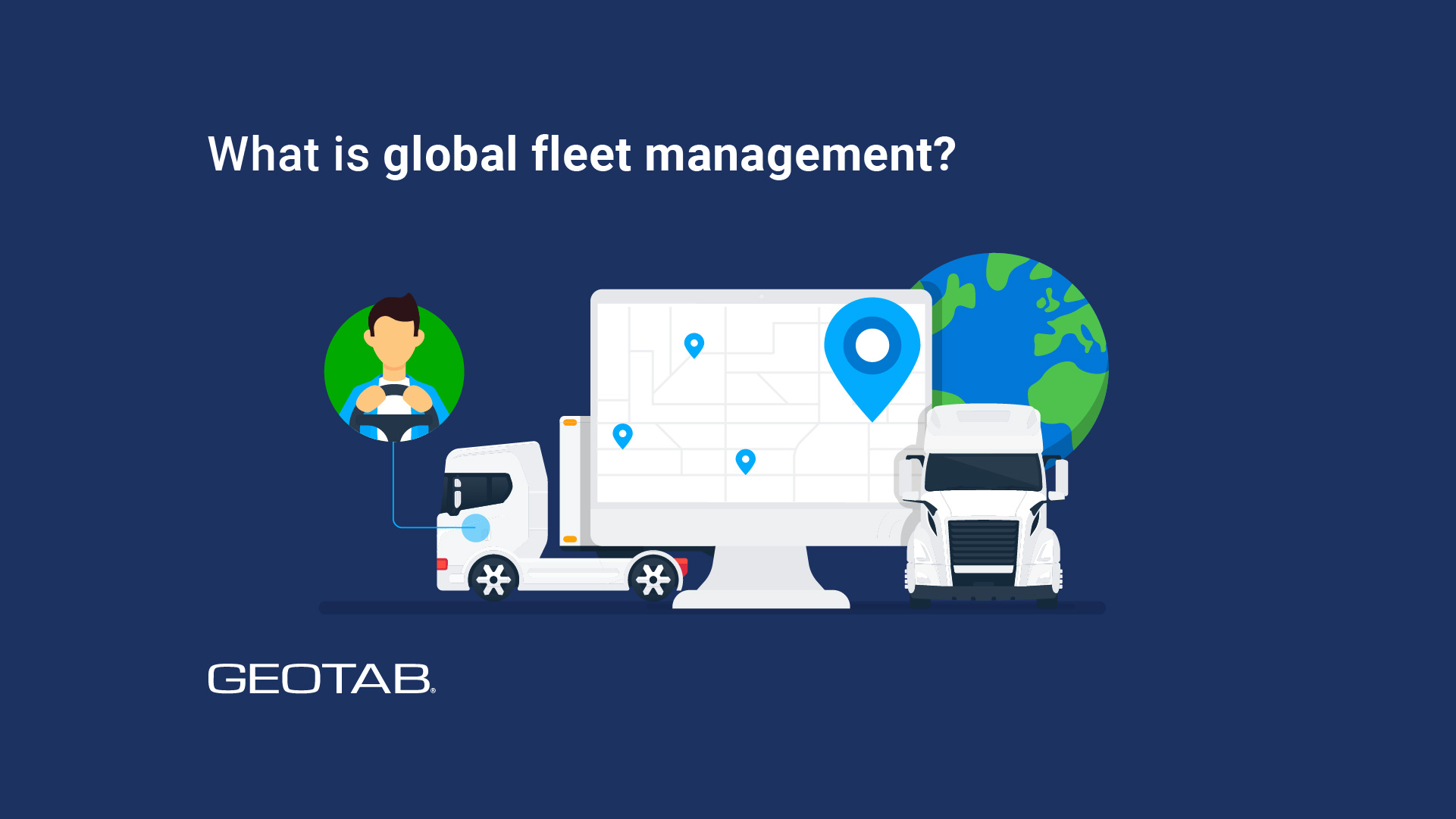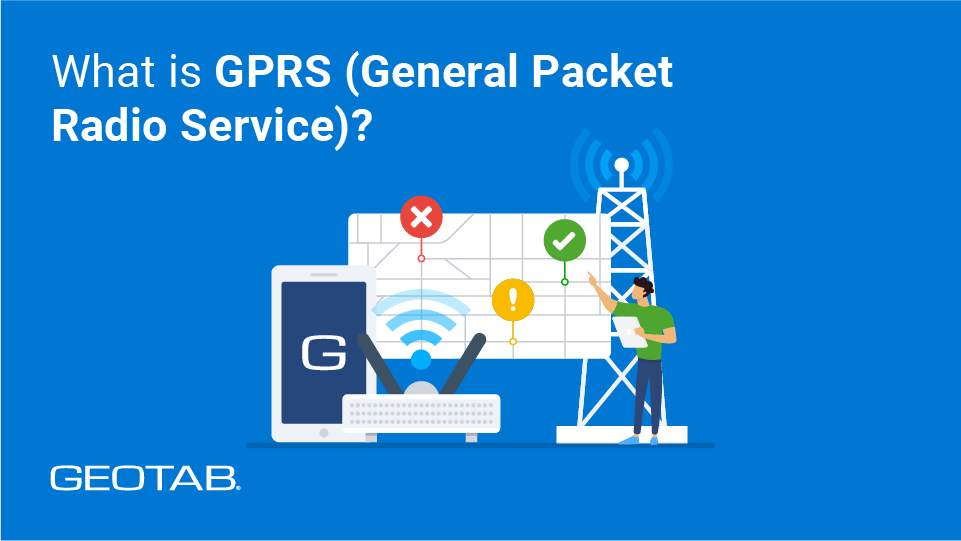What is global fleet management?
May 30, 2025
•4 minute read

Definition
- Global fleet management is the coordination, oversight, and optimization of a fleet of trucks, vans, or other vehicles that operate across multiple countries.
What is global fleet management?
Global fleet management is the coordination, oversight, and optimization of a fleet of trucks, vans, or other vehicles that operate across multiple countries. Some of the common challenges of global fleet management include overseeing vehicle maintenance at scale, promoting driver safety, and navigating regulatory compliance across legal, logistical, and cultural environments. While this makes global fleet management a complex industry, it is also a rapidly growing one full of opportunities for fleets that can navigate its challenges with the right technology strategy.
If you are interested in expanding your fleet across North America or into Europe or Asia-Pacific, it’s important to know the opportunities and complexities of global fleet management. In this blog, we’ll explore why global fleet management matters, the key components involved, how to handle cross-border operations and regulatory compliance, and how to choose a telematics partner for this evolving industry.
The importance of global fleet management
As the global supply chain becomes more interconnected, effective global fleet management is important to enabling reliable commerce across borders and maximizing business profits for transportation firms. A well-structured global fleet strategy can help reduce operational costs, improve driver safety, and simplify compliance with international laws. And as fuel and maintenance costs rise while trade regulations shift, global fleet management has become critical to maintaining competitiveness in a demanding market.
For your fleet to efficiently operate internationally, you need a modern global fleet management strategy that embraces telematics technology to improve decision-making across your operations.
Key components of global fleet management
Vehicle procurement and maintenance
Managing an international vehicle fleet means finding and servicing hundreds of different trucks, vans, and other vehicles across a continent. This requires keeping track of different manufacturers, regulatory standards, and vehicle specifications to plan your transportation operations and maintenance schedules. Successful global fleet managers build partnerships with local and international suppliers to consistently procure and maintain workflows across borders while adopting proactive maintenance through telematics to keep vehicles on the road.
Safety and training
Driving and trucking laws can vary widely from country to country, and even from region to region inside each country. This means a global fleet’s driver training and safety policies must include all local regulations wherever vehicles will travel. It is also important that drivers know what to expect from customs and border security procedures to remain compliant and avoid delays. Beyond transportation rules, driver training should also cover the different languages spoken across relevant countries, which currencies they accept, and other key cultural differences.
Leveraging global buying power
The most effective global fleets know where to find the best prices for vehicles, insurance, component suppliers, fuel, and other essentials. By leveraging their size advantage over smaller firms, global fleets can negotiate better terms with suppliers, fuel providers, insurers, and maintenance vendors. Global fleets can also centralize purchasing to standardize parts, service agreements, and technology tools for improved cost control and efficiency.
The role of technology in global fleet management
Cutting-edge software
Effectively managing your global fleet relies heavily on technology. Platforms like Geotab offer advanced telematics solutions that empower multinational fleets by connecting all their assets in one system and transforming fleet and asset data into actionable insights. This means global fleet managers can automatically unify data from each asset and driver in their fleet to optimize operations by guiding international training programs, finding the most efficient routes, planning predictive maintenance schedules, and much more.
Real-time asset monitoring
Effective global operations require real-time visibility into every asset. With the right transponders and telematics technology, fleet managers can see where vehicles are and track their speed, fuel usage, engine health, and more. This helps reduce delays from traffic, road closures, and busy border stations while enabling preventative maintenance that lowers the risk of breakdowns and unexpected downtime.
Tracking devices
Modern transponders and other tracking devices can collect a wide range of data from fleet vehicles. When you integrate that data with an AI-powered telematics platform like Geotab, you gain powerful cross-border visibility. This allows you to optimize routes for maximum efficiency and better protect your vehicles by helping reduce theft and address unauthorized use.
Navigating the complexities of cross-border fleet management
Managing a fleet that regularly crosses international borders may seem straightforward, but there are many complexities to consider. To understand the challenges of cross-border fleet management, let’s explore a scenario where a U.S.-based fleet routinely sends trucks to and from Canada:
- Customs paperwork and border clearance delays
Crossing international borders requires drivers to have accurate, up-to-date documentation such as bills of lading, commercial invoices, and manifests. Global fleets can minimize delays by digitizing customs paperwork and working with experienced customs brokers to streamline the clearance process. Fleet managers must also stay informed about both countries’ transport regulations, verify drivers are trained to handle border inspections and stay abreast of changing rules around tariffs and trade. - Insurance coverage differences
Insurance requirements can vary widely between the U.S. and Canada, with different minimum liability limits and regulations. To avoid coverage gaps for vehicles and drivers, global fleets must have coverage that extends across borders by working with insurers who provide cross-border policies. - Driver Hours of Service regulations (HOS) that vary between the U.S. and Canada
While both the U.S. and Canada require electronic logging devices (ELDs), the specific HOS rules for daily driving limits and mandatory breaks are not identical. Fleet managers must configure ELD systems to automatically switch rule sets at the border and train drivers on both sets of regulations to remain compliant. - Electronic Logging Device (ELD) mandates with different technical requirements
In addition to requiring ELDs to enforce HOS rules, the U.S. and Canada have different ELD certification processes and compliance standards. To navigate this, global fleets should use ELD solutions that are third-party certified in both countries and provide bilingual support for compliance inspections.
Impact of regulatory changes on global fleet management
Transport regulations are constantly evolving, especially as governments respond to environmental concerns, labor issues, technological change, and changing trade agreements. Global fleet managers must stay proactive about:
- Emissions standards
Regulations like Euro 7 in the EU or EPA changes in the U.S. limit vehicle emissions, which can impact a fleet’s vehicle selection, routing strategies, and timeline for adopting electric or alternative-fuel vehicles. - Driver safety and HOS laws
Shifting rules around required rest breaks, shift lengths, and maximum driving hours can affect a fleet’s route planning, driver scheduling, and overall operational efficiency. - Taxation and tolling requirements
Different countries and jurisdictions impose their own fuel taxes, road usage fees, and tolling systems. This requires fleets to track where vehicles go and account for these costs to maintain accurate financial planning and compliance. - ELD mandates in different jurisdictions
Different countries and regions may impose unique technical and functional requirements for electronic logging devices. To navigate this, fleets should use telematics technology that adapts across regions to meet varying ELD inspection protocols.
The future of the growing global fleet management market
The global fleet management market is expanding rapidly and is projected to reach USD 55.58 billion by 2028 with a compound annual growth rate (CAGR) of 14.2% from 2023 to 2028. In sectors like manufacturing, eCommerce, and energy, more and more companies are recognizing the benefits of integrated, cross-border logistics to drive efficiency and improve their bottom line. As more fleets digitize their operations through telematics, the demand for scalable, data-driven solutions will likely continue to grow.
To maximize the potential of your global fleet, choosing the right telematics partner is critical. Geotab can help you master international fleet management with its centralized platform, global reach, and deep regulatory expertise. With connected fleet management, you have the insight needed to scale operations across geographies and regulatory environments for long-term success.
Frequently Asked Questions
As of 2024, the North American fleet management market is valued at approximately $9 billion USD and is expected to grow steadily due to increasing demand for digitization, fleet electrification, and connected vehicle solutions.
According to the Fleet Management in the Americas – 14th Edition report, Geotab is the largest fleet management company in the U.S. with more than 3 million active subscribers.
And according to ABI Research, Geotab has been ranked the #1 global telematics vendor for the fourth year in a row, recognized for its leadership in innovation and implementation.
Table of Contents
- What is global fleet management?
- The importance of global fleet management
- Key components of global fleet management
- The role of technology in global fleet management
- Navigating the complexities of cross-border fleet management
- Impact of regulatory changes on global fleet management
- The future of the growing global fleet management market
Other Stories

What is a CAN Bus? How it impacts fleet management
December 1, 2025
6 minute read

August 5, 2025
5 minute read
July 17, 2025
4 minute read